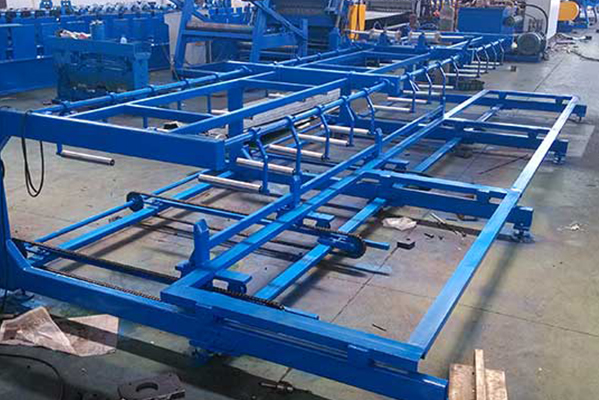Navigation Menu
Contact Us
- Email:
- info@wxavatar.com
- Address:
- Yurong Village, Yuqi Street, Huishan District, Wuxi, China.
Release Date:Jul 13, 2025 Visit:37 Source:Roll Forming Machine Factory
The field of auxiliary machine systems has seen notable advancements this year, with improvements in efficiency, reliability, and integration capabilities. These innovations are shaping industries such as manufacturing, automotive, and energy by enhancing operational performance and reducing downtime. Below are some of the most significant developments in auxiliary machine systems.

1. Enhanced Predictive Maintenance Technologies
Predictive maintenance has become more sophisticated with the integration of advanced sensors and machine learning algorithms. Modern auxiliary systems now analyze real-time data to detect potential failures before they occur, minimizing unexpected breakdowns. This approach helps optimize maintenance schedules and extends equipment lifespan.
2. Improved Energy Management Systems
New energy management solutions in auxiliary machines allow for better power distribution and consumption tracking. These systems dynamically adjust operations to balance load requirements, leading to more stable performance in industrial applications.
3. Advanced Automation and Control Systems
Automation in auxiliary machines has progressed with the adoption of smarter control interfaces. Programmable logic controllers (PLCs) and human-machine interfaces (HMIs) now feature enhanced responsiveness, enabling more precise adjustments and reducing manual intervention.
4. Compact and Modular Designs
Manufacturers are increasingly adopting modular designs for auxiliary systems, allowing for easier customization and scalability. These compact configurations save space while maintaining high performance, making them suitable for diverse industrial environments.
5. Integration with Industrial IoT (IIoT)
The expansion of Industrial Internet of Things (IIoT) connectivity has improved auxiliary machine functionality. Real-time monitoring and remote diagnostics are now more accessible, enabling operators to make data-driven decisions for system optimization.
6. Higher Durability Materials
Innovations in material science have led to more robust components in auxiliary machines. Enhanced coatings and wear-resistant alloys contribute to longer service life, particularly in high-stress applications.
7. Noise and Vibration Reduction
New damping technologies and structural optimizations have reduced operational noise and vibrations in auxiliary systems. This improvement enhances workplace conditions and ensures smoother machinery performance.

Conclusion
This year’s advancements in auxiliary machine systems demonstrate a strong focus on efficiency, automation, and durability. As industries continue to adopt these innovations, businesses can expect improved productivity and reduced operational costs. Future developments will likely build on these trends, further refining the capabilities of auxiliary systems.